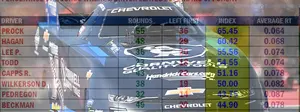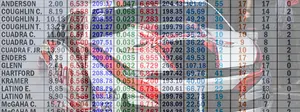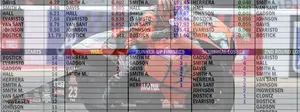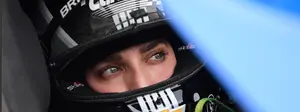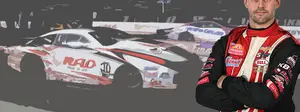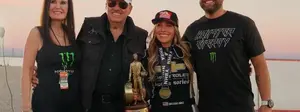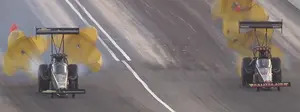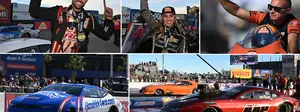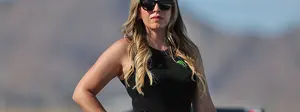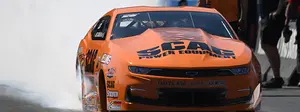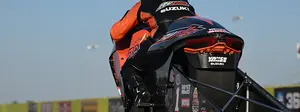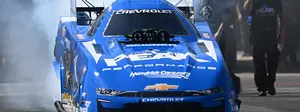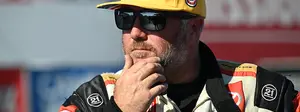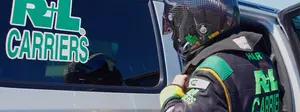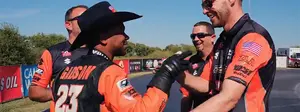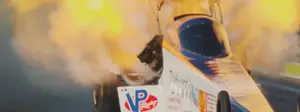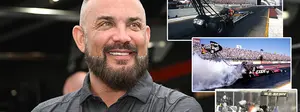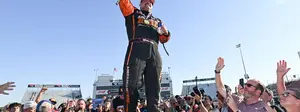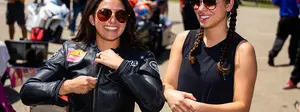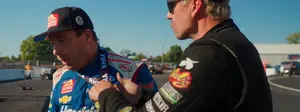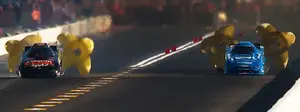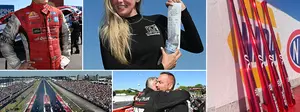

For Brian Husen, Gainesville Top Fuel win was a milestone in a long career
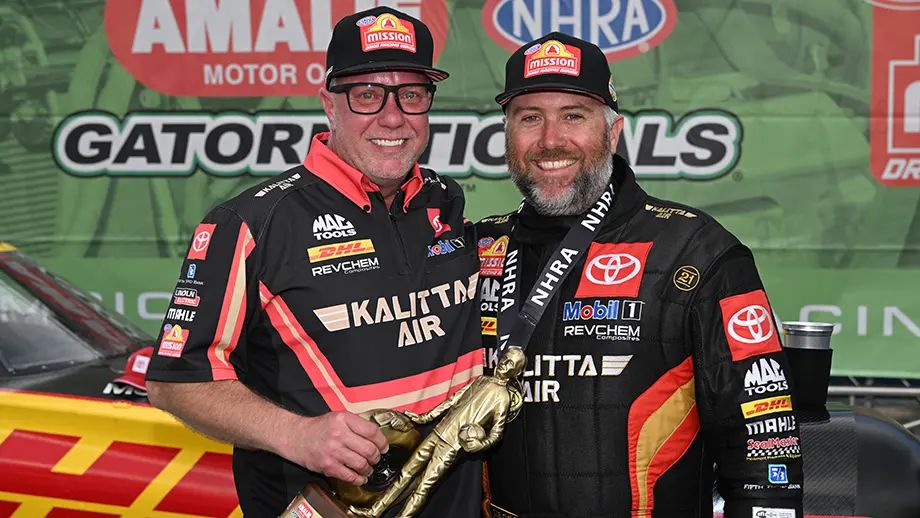
In a drag racing career that has spanned more than 35 seasons, Brian Husen has experienced a lot of success as a crewmember and assistant crew chief, tallying 10 world championships and more than 100 event victories, much of it as master tuner Alan Johnson’s right-hand man.
But when his time finally came for his starring role at this year’s Amalie Motor Oil NHRA Gatornationals, where he stood alone in the spotlight as the tuner for Shawn Langdon’s Kalitta Air dragster, Husen was ready for his close-up and guided Langdon to his first Gatornationals Top Fuel victory and a milestone first win for himself as the lead crew chief.
Husen has been at Johnson’s side for more than 20 years and has been a key cog in the machine that produced memorable moments like Tony Schumacher’s championship-clinching pass — “The Run” — at the 2006 NHRA World Finals and, more recently, Doug Kalitta’s first world championship in the dramatic winner-take-all final round against Leah Pruett at last year’s Finals.
And when the need arose over the winter for a crew chief for Langdon’s dragster, Husen, buoyed by years of experience at the master’s knee, was ready for the challenge of stepping out on his own and assuming the lead role. He not only tuned Langdon to the No. 1 qualifying spot and the event win, but their victory completed the second half of the first nitro double for Kalitta Motorsports on the heels of J.R. Todd’s win in Funny Car.
The road to the top

Husen grew up with nitro in his blood as his father, Mike Husen, raced in Top Fuel and Funny Car in the late 1970s and early 1980s, mostly match racing out of their Grand Rapids, Mich., base. Brian was too young to be a part of that but knew that was where his future lay.
In 1996, he went to the NHRA U.S. Nationals as a spectator and handed out résumés, hoping for a job in the sport. The following Tuesday, the phone rang and he was offered a job on the Joe Gibbs McDonald’s Top Fueler driven by Cory McClenathan. Despite no formal training, someone saw the potential.
“I never went to school or training or anything like that; it was one of those things that maybe growing up around my dad, working on things or whatever it is, that it came to me," Husen said. "Some people are book-smart. Some people are computer-smart. For me, the mechanical side of it came naturally, all of the math and geometry was just kind of a natural thing."
The crew that he joined at the time was filled with other young bucks who would go on to tuning greatness in the sport: Mike Green was the crew chief. Dickie Venables did the clutch. Mike Neff built short blocks.
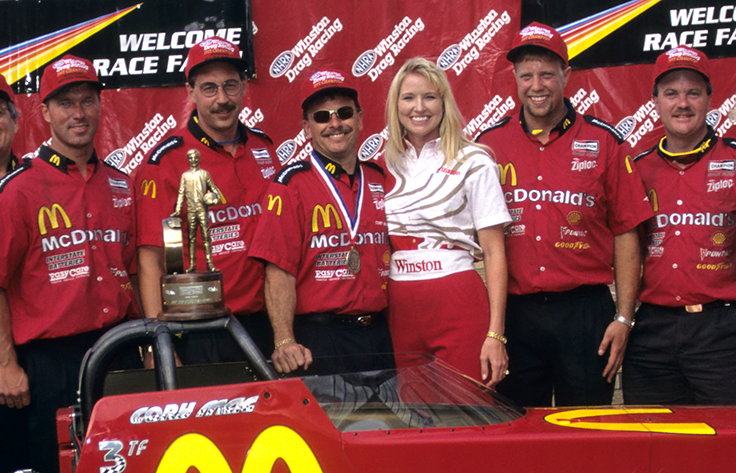
From left, Mike Neff, Mike Green, Cory McClenathan, Brian Husen, and Dickie Venables were part of a powerhouse crew of McClenathan's car in the late 1990s.
“I did the bottom end and tires, and that was awesome. Mike and Dickie trained me on how to build short blocks, and I just kind of slowly progressed from there. I was there through the 1999 season, and, through a mutual friend, I met Alan Johnson and went to work on the e-moola.com Funny Car with Alan and Bruce Sarver in 2000."
Towards the end of that season, Husen was offered a job working for Don Schumacher Racing, which had just landed the U.S. Army sponsorship for Tony Schumacher’s car. Husen went to work on Melanie Troxel’s teammate's car and in 2001 joined Schumacher’s Army team with crew chief Dan Olson.
The Johnson-Husen connection
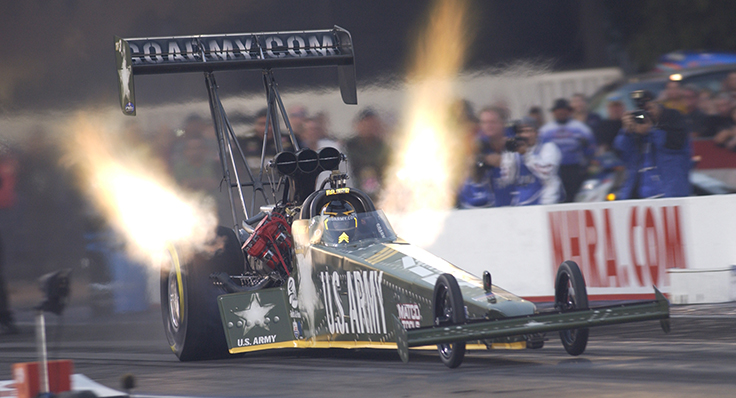
Johnson took over the crew chief role on the Army car in the summer of 2003 and took Schumacher to incredible heights, including five championships (2004-2008), and they won dozens of races, including five victories at the U.S. Nationals.
When Johnson left the Schumacher team after the 2008 season to create the Al-Anabi team, Husen went with him, and they continued winning races and championships with Larry Dixon (2010), Del Worsham (2011), and Langdon (2013).
It was during 2011 that Johnson first named Husen assistant crew chief, and Husen began working on the drag racing equivalent of a master’s degree in tuning a race car.
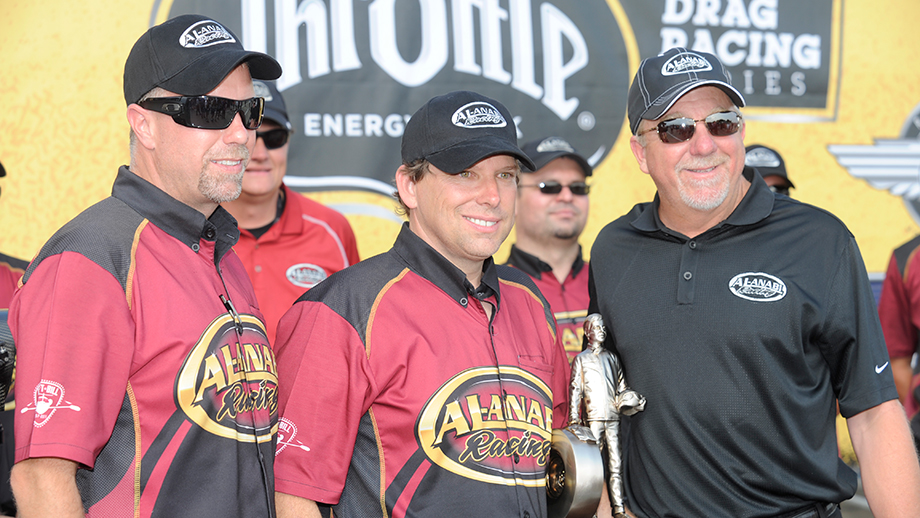
“When you work in an environment that you love, you just want to move your way up and do the best you can, learn as much as you can,” he said. “Fortunately, I was around a lot of smart people and learned a lot of good things, and got a lot of great opportunities.
“You don't realize it at the time, but as time goes on, you start to realize you've trained under one of the greatest minds out there. Early on, I didn't know what I should know or needed to know, and I guess he saw enough in me to put the effort into teaching me. As the years go on, you start to develop a bond and a relationship, and it got stronger and better as the years went on.”
After the Al-Anabi funding dried up, Johnson fielded his own car for a partial season in 2015 and then helped the Torrence team at the end of the year, and Johnson invited Husen along to join him. In 2016, they joined John Force Racing and a year later tuned Brittany Force to her first world championship.
The A.J. Way
“One of the things that Alan taught me throughout all the years was the art of running a Top Fuel car," said Husen. "These days, everybody has tools on their car that can compensate for a miss on the setup and turn what would normally be a bad run into an OK run. There are valves that can adjust the clutch pressure if it’s wearing too much or not enough, but Alan always taught me that even though we have these tools to fix a missed call, the goal is to try not to need them. You can rely on those things all the time if you want, but you're not really learning anything, and the goal is to try to set everything perfectly on your own so that you don't rely on those tools.
“These cars are so complex these days, it's really hard to do with just one person. There are so many data channels — about 80 — to look at and to make sure you're not missing anything. It's too much for one person these days. Alan makes all the final calls, but as time went on and I learned more, I earned his trust, my opinion would have merit at times, and he would rely on my opinion at times, especially over the last four or five years. Ultimately, when it came down to the final decision, it was his decision to make, and it really needs to be that way. You can't have two people making decisions on the car.
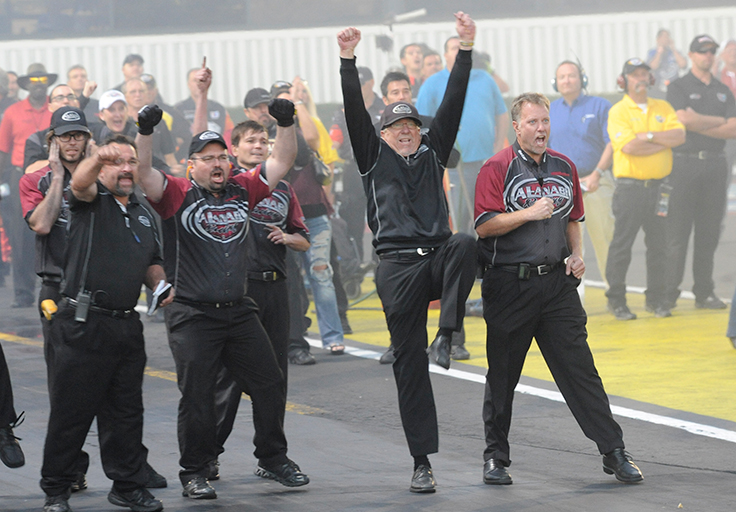
“After all of the years working with Alan, we think the same, and he's taught me how to run a Top Fuel car, and how to pay attention to the right things and not pay attention to the wrong things.
“One of the things I'm most proud of throughout my career is that we never broke the rules. I'm sure there are some dishonest people out there who might do small things here or there, but with Alan's upbringing and how he was raised, it was one thing we've never considered, never even came close to, so I know that every championship I have, every round-win I have, has all been honest and earned, and there's never been any team orders or anything like that.”
Time to fly?
“Somewhere in the midst of the Force era, I really felt like I was confident in everything that was expected of me as far as my job duties go, and I was ready to make the next move to be a crew chief if the opportunity ever presented itself. Looking back on it now, I was not ready back then. I thought I was, and it turns out to be good that I didn't get an opportunity because I think I may have not been successful.
“Back then, I felt like I had seen every different scenario, and had a plan for those scenarios, and then just when you're thinking that kind of stuff, you'd run into a new scenario. I would be thinking in a certain direction, like this is what we need to do to address this, and Alan would be completely in the opposite direction. And, obviously, we would go in the direction of Alan, and it would work. And that's when I knew I wasn’t ready.
“I think I waited the perfect amount of time, and it all came together at the right time.”
The 2023 Championship
The duo’s 10th and most recent championship came last year when they finally helped Doug Kalitta, a six-time championship runner-up, obtain a lifelong goal of a Top Fuel championship.
“Having the success that A.J. and I have had over the years and having raced against Doug all those years, and to think how much success you've had and how much he hasn't, and having the opportunity to help him achieve that, that was probably more gratifying than anything. I think it meant more to me than it did for me to just win the championship. I was more happy for him than anything.

“In the weeks leading up to that, fans, my family, the other competitors, they're all telling me, ‘We're counting on you guys; everybody's counting on you to get Doug that championship.' At one point, it was a little weird. If you don't win the championship, in a normal situation, it’s alright, maybe you've kind of let yourself down, but when you hear so many people who are counting on you, it's like, ‘Holy smokes, this is a little overwhelming. Like, 'If we don't pull this off, we're gonna let so many people down.’
“It was exciting, but when we got to that final round, I think maybe I'm a little seasoned to it. We were pretty confident [in the] setup of our car; that was probably the most relaxed I'd been in a final round, not to take anything away from our competitor. It was more of a been-here-before feeling, and we've done everything we can do, we've made all the decisions we can make, and the outcome was gonna be whatever comes to be. You just gotta be at peace with that and trust your instincts and how you prepared the car and just hit the gas, and whatever is going to happen is going to happen.”
The right time
Even as Johnson and Husen were guiding Doug Kalitta to his first championship last season, grinding through the six-race Countdown to the Championship with three wins despite having to change to a backup car, discussions were ongoing about Husen taking over the tuning on Langdon’s car.
“It’s funny because all of the years I was with A.J., no one ever came and tried to steal me away," he mused. "They knew I was A.J.’s guy, and I always kind of knew that the only way I was ever going to get this opportunity was either Alan was going to retire and I was going to take over the duties on the car we were on or I was going to go find another job, and it would have been a tough decision to leave Alan, and I'm grateful that nobody did approach me.
“When we started talking about Shawn’s car late last year, there was really no other option. I was trying to look at it from a non-selfish standpoint, because obviously that's what I want to do, but probably one of the worst things you could do is split A.J. and I up.
“After we got through the season and won the championship, we started talking again, and I don’t think that initially Alan or I were big fans of the plan, but in the interest of Kalitta Motorsports, it really made the most sense, because you can hire somebody from outside to come in, and we train them how we run the car, but that's going to take away from us running Doug's car.”

Kalitta hired Mac Savage, who was David Grubnic’s talented understudy on Brittany Force’s car, allowing Husen the chance to move over to Langdon’s car.
“I spent a lot of the winter in Michigan to get Mac trained on how we do things and make sure Doug's car was not lacking anywhere and wasn't going to miss my attention. And then I had to get Shawn’s group of guys trained. They were already kind of on the same page, but when you're not with them day to day to make sure everything's exactly the way it needs to be, the thing I preached to the guys on Shawn's car was that they're good mechanics, and they do a good job, but they just never had the success. Five of them had never even won a race.
“So, I just reminded them that the devil’s in the details, from cleanliness with the toolbox and the trailer, and if you pay attention to those things, that means you're going to pay attention to the same things on the race car. As long as we focus on the details, the rest of it will work itself out.
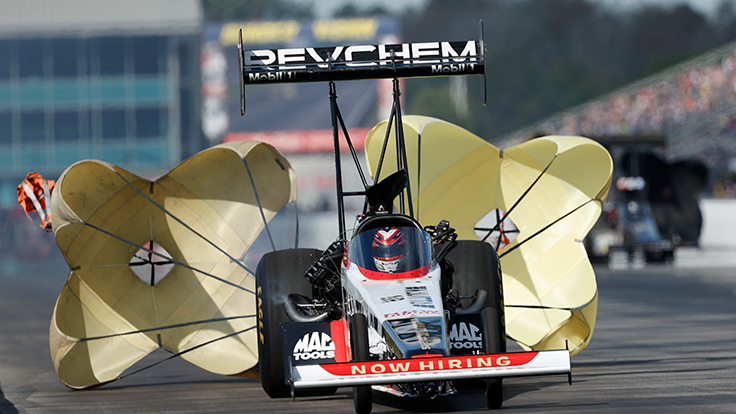
“The tune-up in Shawn’s car is the same one that’s on Doug’s car, but once you get a group of guys putting it together, their feel for something is slightly different — like maybe the way they use the feeler gauge on the clutch — so you kind of have to adjust how you run the car. You can look at every single note and say, 'I'm just gonna put it like this and it'll run the same.' But as long as the guys put the car together the same way every time, you can adjust.”
Winning the Gatornationals
“Alan and I talked a little before testing and before qualifying in Gainesville, and I kind of had a direction, but I knew I couldn’t go to him for every little decision or problem. One of the things when it comes to running one of these cars, it's hard to get too wrapped up in somebody else's problems. You don't want your other car’s problems to become your problem, or you start overthinking things. I didn't know how involved he was going to try to be or want to be, not that he doesn't want to be involved. But I knew he needed to focus on Doug's car.”
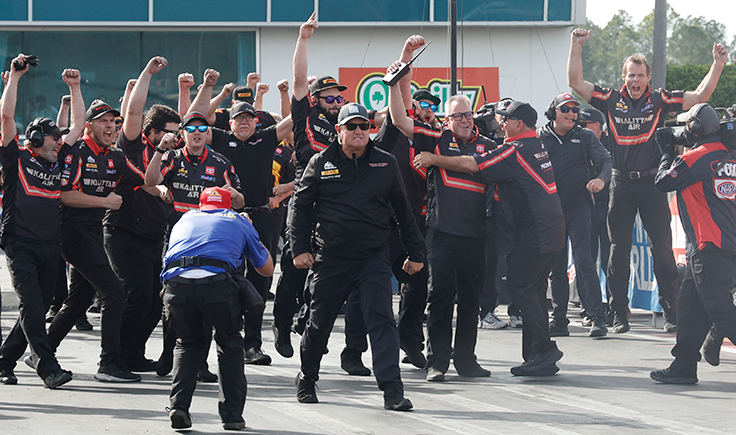
“As the rounds went by, I was focused on winning and just making sure that I didn't miss anything, reviewing the data to make sure I was not missing anything and making sure that I was making the right decisions. You need to stay focused and pay attention to that, but the guys were obviously pretty happy and excited to go rounds, and I would just politely remind them each time, ‘We’ve still got work to do; don't get too excited.’ But they were enjoying themselves, Shawn was having fun, and I was just trying to stay focused and make sure I didn't miss anything and make no mistakes.
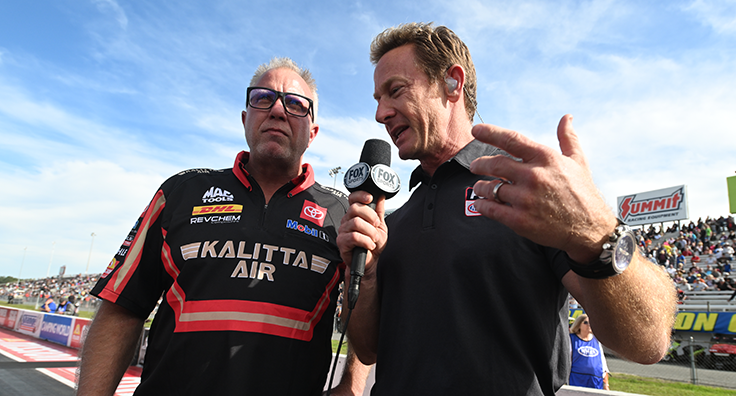
“Winning the race didn’t really set in until after the final round when Bruno [Massel, of NHRA on FOX] wanted to interview me. We had to wait a few minutes for Shawn to wrap up his interview, and it was just kind of a quiet 30 seconds or 40 seconds or so, and that was when my adrenaline started to come down a little bit, and I realized what just took place. And that's kind of when it caught up to me a little bit.
“I approached the whole race like, ‘This is the opportunity that has been handed, and I better put my head down and make sure I don't screw this up.’ So, the fact that it turned out the way it did was just more of a relief, and I didn't screw it up more, so I guess then, in fact, that was a successful weekend."
Looking ahead
“I always set the bar myself to go out there and do a good job and hopefully win races, and that's what I expect of myself, and I think, I would hope, that's what they expected of me. So, that's the expectation going to the rest of the races this year. We're going to get into some more challenging racetracks, and I'm sure there's going to be some challenges that I'll need to overcome and maybe won't be successful outcomes. And we'll keep learning from there.
"I'm ready for the challenge, and I'm ready to put my head down, work hard, and go after it. There's a lot of racing left to do, and there's a lot of different challenges that are gonna approach themselves. Gainesville was a very good racetrack, so it was a perfect scenario for a guy like myself who still has a lot to learn. The track temperatures and the conditions didn't change a whole lot, so there weren't a lot of major moves to make as far as that goes. But I know those days are coming. I'm looking forward to it because I know it's going to help me be better in the future.”
























